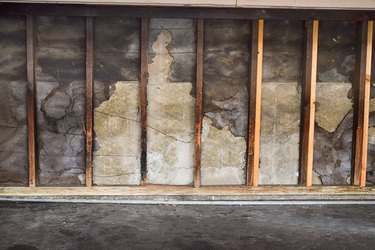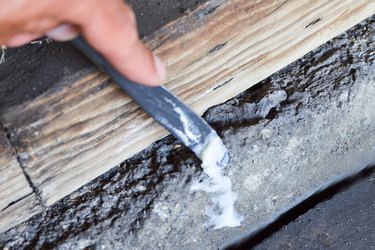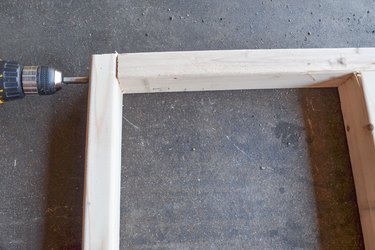
There are two definitions of a basement frost wall. The first is a foundation wall of a home set on footings beneath the frost line; this prevents the heaving that occurs when the ground freezes and thaws, which would damage the home. The second is a non-load-bearing wall that insulates below-grade space in a home. The basements in many older homes are not insulated and, therefore, require a frost wall built just inside the basement's exterior walls to reduce heat loss through the foundation. The interior wall should not touch the exterior wall, and should include a moisture barrier to prevent moist interior air from forming ice inside the wall.
A Properly Prepared Foundation Wall
Video of the Day

Fill and seal any cracks or gaps in the existing wall in order to keep out as much cold and moisture as possible. On cinder block walls, use brick filler to fill any gaps in the mortar between blocks. On poured cement walls, seal any cracks with a concrete repair kit.
Video of the Day
A Sturdy Frame

Construct a frame from two-by-fours or 2-inch-by-3-inch lumber. Cut a top plate and bottom plate to the width of the wall. Cut vertical studs to the height of the basement minus 3 inches to accommodate the top and bottom plates. Screw a stud to the top and bottom plates every 16 inches. Move the assembled wall into place in front of the existing basement wall. Place it at least three-quarters of an inch from the existing wall in order to allow air to move in the space between. Screw the frame into the ceiling joists with wood screws and into the floor with concrete screws.
Sufficient Insulation

Standard-dimension insulation will fit correctly into the 16-inch spaces between your studs. Keep the installed insulation from touching the concrete or brick basement wall by selecting insulation with a paper face and stapling tab. With the paper surface facing into the room, staple through the tab into the vertical studs. This will create the air space the insulation needs to function properly and keep it from absorbing moisture and freezing to the concrete.
Vapor Barrier

Install a plastic or polyurethane vapor barrier on the inside of the frost wall. The purpose of the vapor barrier is to prevent moist air in the home from penetrating the interior of the wall, where it would cause moisture damage, ice deposition and possibly mold. Staple the vapor barrier sheets to the wall studs. Cover the staple holes and any seams between sheets with sheathing tape. Seal the outside edges of the wall with sheathing tape as well. Once the insulation and vapor barrier are in place, the wall can be finished with drywall, paneling or other materials.